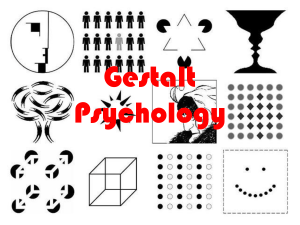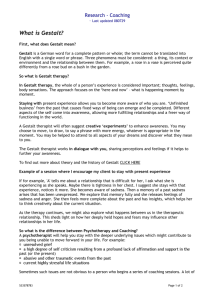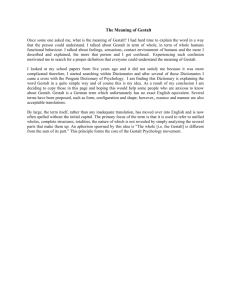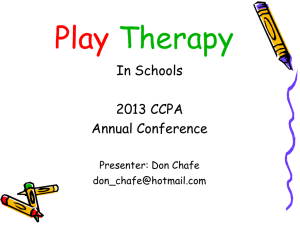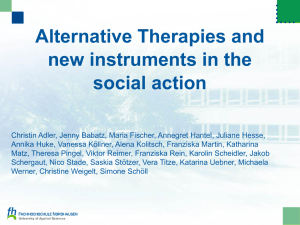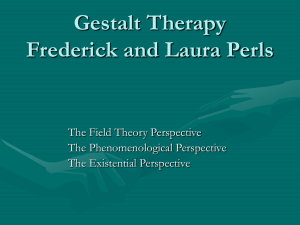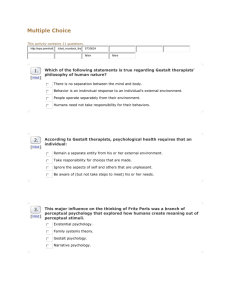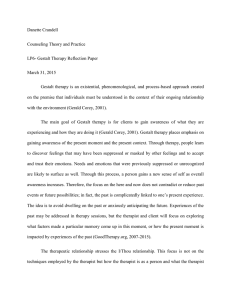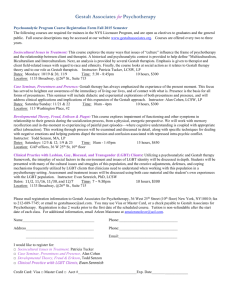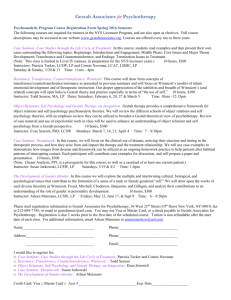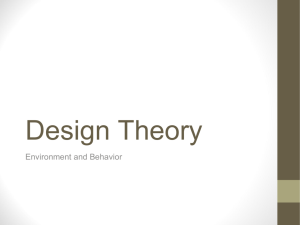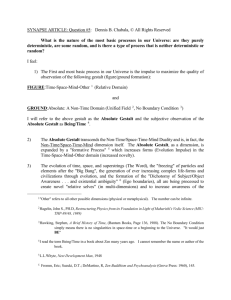Gestalt Group Therapy: Theory & Practice Presentation
advertisement
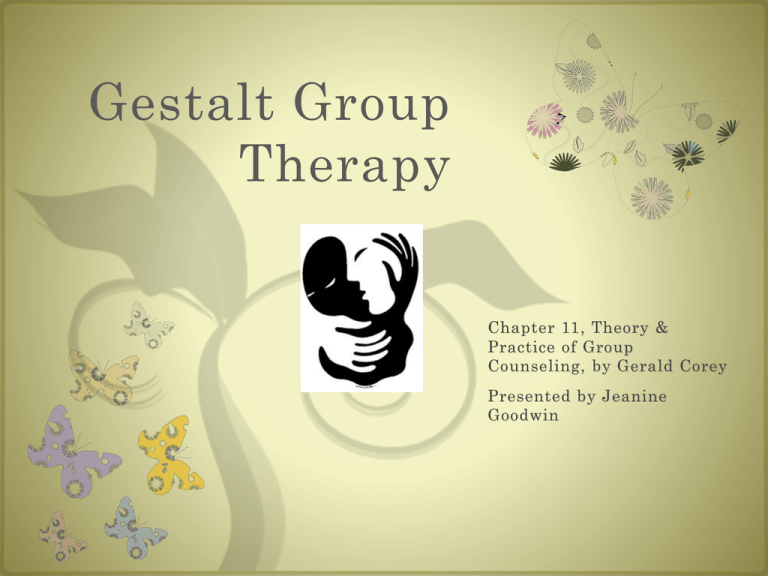
Gestalt Group Therapy Chapter 11, Theory & Practice of Group Counseling, by Gerald Corey Presented by Jeanine Goodwin In the Beginning… Fritz & Laura Perls Established in the 1940’s Focused on person-centered awareness, and addressing the client’s unresolved issues Quickly known for its confrontational, “hot seat” approach Originally designed for one-on-one therapy The group aspect was indirect (one-onone therapy in front of an audience) The Revised Standard Version Referred to as relational Gestalt therapy Introduced by Erving and Miriam Polster Less confrontational More supportive, accepting, and challenging Little use of the “empty chair” technique Focuses on the client-therapist relationship, empathy, dialogue, and helping the client tap into his/her own wisdom and resources http://www.youtube.com/watch?v=Q7cwa5X 6zgk Therapeutic Goals AWARENESS!!! Integration of polarities Achieving contact with self and others Learning how to clearly state wants or needs Learning how to support one another Learning how to make use of the resources within the group versus using the therapist as a resource. Key Concepts and Principles Awareness Holism (“The whole is greater than the sum of its parts”) Field Theory Figure-Formation Organismic Self-Regulation Here-and-Now Unfinished Business Contact and Disturbances to Contact Energy and Blocks to Energy Group Leader Role and Function Creates experiments to help members tap their resources Focuses on awareness, contact, and experimentation Actively engaged with group members and frequently self-discloses Creates an atmosphere and structure conducive to the members’ creativity and innovation Less emphasis on technique, more emphasis on direct self-expression, presence, authentic dialogue, and the client-therapist relationship Contacts with group members on an “I/Thou” basis Serves as an “artist involved in creating new life” according to Polster and Polster (1973) (Corey, 2008, p. 290). Uses his/her own experience as an essential component of the therapy process. Stages of Group Therapy First Stage Identity and Dependence Group members (with the therapist’s help) explore questions they have about their identity within the group Second Stage Influence and Counterdependence Group members grapple with issues of influence, authority, and control Third Stage Intimacy and Interdependence Real contact occurs within and among the group members. Members are helped to recognize their unfinished business not worked through in the group. Group leader no longer the ultimate authority, but serves as a resource or consultant. Techniques & Procedures Experiments Attention to Language Nonverbal Language Internal Dialogue Experiments Making the Rounds Fantasy Approaches Rehearsal Exaggeration Experiment Dream Work Gestalt in School Groups Emphasis on building quality therapeutic relationships Art & Storytelling Empty Chair Topdog-Underdog Techniques are limited within some adolescent groups (p. 306) Here and Now Dream Work Gestalt in Multicultural Groups World View Phenomenological Emphasis on non-verbal expression Use of imagery and fantasy* Speak in native tongue Solid understanding of the limitations of Gestalt techniques in dealing with diverse populations Strengths Quality of contact Authentic relationship and dialogue Emphasis on field theory, phenomenology, and awareness Creativity and spontaneity Integration of theory, practice, and research Present-centered methodology Focus on the body (affect, non-verbals) Limitations Elicitation of emotions Misuse of power Competency of the therapist or group leader Rigidity and Pushiness in therapy Misapplication of methodology References Corey, G. (2008). Theory and Practice of Group Counseling, 7 th ed. Belmont, CA: Thomson Brooks/Cole. Polster, E. & Polster, M. (1973). Gestalt Yontef, G.M. (1993). Awareness, Therapy Integrated: Contours of theory and practice. New York: Brunner/Mazel. Dialogue, & Process: Essays on Gestalt therapy. Gouldsboro, ME: The Gestalt Journal Press
